

Sub Club by RevenueCat
David Barnard, Jacob Eiting
Interviews with the experts behind the biggest apps in the App Store. Hosts David Barnard and Jacob Eiting dive deep to unlock insights, strategies, and stories that you can use to carve out your slice of the 'trillion-dollar App Store opportunity'.
Episodes
Mentioned books
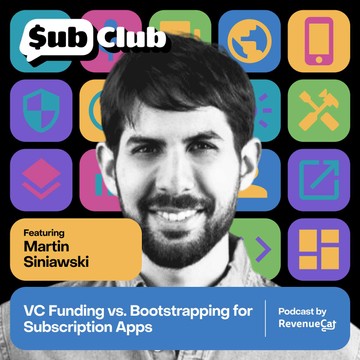
Oct 4, 2023 • 41min
VC Funding vs. Bootstrapping for Subscription Apps — Martín Siniawski, Podcast App
Martín Siniawski, co-founder of Podcast App, discusses the challenges and benefits of bootstrapping and raising venture capital for subscription apps. Topics covered include launching a bootstrapped business, the differences between B2B and B2C success, the importance of focus in a multi-product app business, and the strategies for user acquisition and growth.
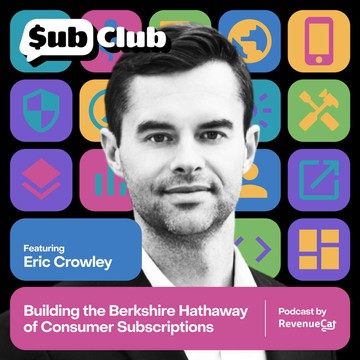
8 snips
Sep 20, 2023 • 53min
Building the Berkshire Hathaway of Consumer Subscriptions — Eric Crowley, GP Bullhound
Eric Crowley, investment banker and partner at GP Bullhound, discusses the potential for growth in the B2C app industry, the regulatory spotlight on App Store fees, and the fluid boundary between B2C and B2B. The podcast explores the exponential growth of consumer subscriptions in the Apple App Store, the advantages of native app experiences, and the concept of finding the 'Berkshire Hathaway of App Stores'. It also delves into the challenges of calendar management, the benefits of using the Greenlight app for family management, and the success rate of companies featured in the annual CSS report.

Sep 6, 2023 • 37min
How To Raise Prices (the Right Way) — Reid DeRamus, Substack
Reid DeRamus, Growth PM at Substack, discusses raising app prices while balancing growth and retention. Tips include reaffirming value proposition, analyzing retention metrics, focusing on acquisition, adding tiers for options, and executing well to avoid churn.

11 snips
Aug 23, 2023 • 46min
App Store Ethics, Dark Patterns, and Rule-Breakers — Steve P. Young, App Masters
App optimization expert Steve P. Young discusses black hat strategies, hard paywalls, and dark patterns used by top apps. Keyword install campaigns trick app store algorithms. Don't be afraid to use a hard paywall to drive revenue. Test monetization strategies and analyze data. Fully optimize onboarding and paywall to increase revenue. Explore the ethics behind paywalls and misleading payment processes.
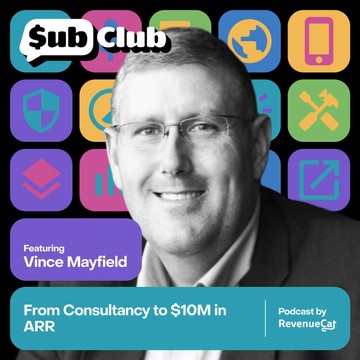
Aug 9, 2023 • 47min
From Consultancy to $10M in ARR — Vince Mayfield, TalkingParents
On the podcast: The right way to raise prices, the painful lessons from picking the wrong tools, and why you should respond to every single app review.Top Takeaways✍️ Start surveying as soon as you start developing, and don’t stop. Identify your MVP by understanding customers early on, and develop new features with key customer insights when you’re growing.📈 Bundle extra value if you must raise prices to soften the blow of a tough sell and demonstrate attentiveness to customer needs.🧰 Cheaper, easy-to-integrate tools might not scale on infrastructure and unit economics, which could lead to a painful re-engineering process down the line.🏗️ Plan for scalability from the start by adhering to solid software engineering principles and ensuring your tooling integrations are easily switchable.🤑 Provide premium support for a premium product price. Respond to every store review — each interaction leaves a lasting impression on customers and drives loyalty.About Vince Mayfield👨💻 Co-founder and CEO of TalkingParents, an app that helps divorced or separated parents manage communication and share responsibilities.💪 Vince and his partner jumped from professional services to building a scalable app with $10 million in ARR.💡 “People like to compartmentalize elements of their life and they don't want to have a million apps.”👋 LinkedInLinks & Resources‣ Connect with Vince on LinkedIn‣ Check out TalkingParents‣ TalkingParents on Instagram‣ TalkingParents on Facebook‣ TalkingParents on Pinterest‣ TalkingParents on X (formerly Twitter)‣ Get TalkingParents from the App Store‣ Get TalkingParents from Google PlayEpisode Highlights[1:35] Origin story: Making money while we sleep is the ultimate goal — Vince talks about how he moved from agency to product company to $10 million in ARR.[4:44] From hired gun to product growth: Lack of app monetization and not understanding customers early on may make pivoting to a product focus challenging.[7:59] Risk management for risk mitigators: How do you make money from the court system? Easy: Switch focus to the real customers.[10:32] Freemium tinkering: Vince dives into the app’s early strategy for monetization and subscription — burning through close to $1 million in the process.[12:59] Chartered surveying: When it seems like an app is charging too little, asking customers what features they want and need is the ticket to nailing down value.[15:59] Downhill slalom vs. uphill climb: Raising already low prices can be delicate, but bundling additional value with a rollout often softens the blow. Look for opportunities to layer on deeper value.[28:33] Nudges and needs: From surveying to app instrumentation, Vince and his partner had to understand the customer journey before making the right moves.[32:08] The ultimate tool belt: Not paying attention to how apps can scale from the very beginning is an easy mistake for app developers to make — especially when using tools.[38:28] Best-in-class assessment: Starting with best-in-class tools isn’t always doable, but adopting good software engineering techniques as you go is a satisfactory quick fix.[41:28] Lightning round: Vince talks about why support matters and how that translates into running a business and customers’ responses.
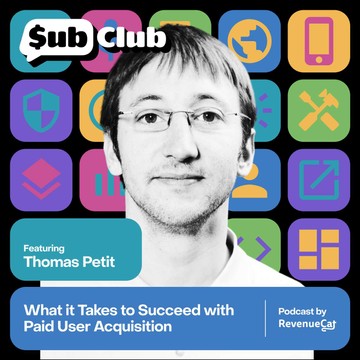
42 snips
Jul 26, 2023 • 1h 19min
What it Takes to Succeed with Paid User Acquisition — Thomas Petit, App Growth Consultant
App Growth Consultant Thomas Petit shares insights on setting goals for paid marketing, testing ad creatives, and optimizing campaign performance. He emphasizes the importance of clear goals and user understanding before investing in advertising. Petit discusses the challenges of manual targeting and the benefits of optimization. He also emphasizes the analysis of blended metrics for paid user acquisition. Additionally, Petit highlights the significance of creating performance ads that resonate with the audience and discusses the negative effects of low install rates for clickbaity ads on platforms like Facebook.

10 snips
Jul 12, 2023 • 45min
Achieving Mission & Profit with Freemium — Erin Webster-Shaller and Paul Apollo, Lose It!
On this episode: balancing mission and monetization, the challenges inherent to referral programs, and why Lose It! had to abandon a big push into paid user acquisition.Top Takeaways🆓 Excellent free products need a large user base to upsell — messaging millions of users about special offers can deliver fantastic returns. (10:32)🚂 Extend onboarding for increased trial engagement by asking more personalized questions to boost trial start rates and tailor the user experience. (14:43)👏 Celebrate user success to drive word-of-mouth marketing and organic growth, while strengthening the bond between users and your brand. (25:47)🥇 Encourage setup of premium features during trials while carefully A/B testing each feature for user resonance. (31:49)🏃 Identify key actions to boost user conversion with the power of data analysis: Target users with discounts or special offers to entice them to upgrade to a premium subscription. (36:29)About Erin Webster-Shaller👨💻 VP of Marketing at Lose It!, one of the first health and wellness apps on the App Store.💪 Erin has been responsible for determining whether new features should be premium or free, as well as running A/B testing for messaging.💡 “There’s a lot of gimmicks in the weight loss industry: We try to be authentic and real with what this product can help you do — but also not oversell it [and] promise something that isn’t realistic.”👋 LinkedIn | TwitterAbout Paul Apollo👨💻 Senior VP of Operations at Lose It!.💪 Paul has been with the company for nine years and has spent nearly that entire time in growth marketing.💡 “We want to make sure that there is an excellent free product available for anybody who wants access to it.”👋 LinkedInLinks & Resources‣ Check out Lose It!‣ Work with Lose It!‣ Connect with Erin on LinkedIn‣ Connect with Erin on Twitter‣ Connect with Paul on LinkedInEpisode Highlights[1:45] Mission-driven: Lose It! founder JJ Allaire was tracking calories on a spreadsheet when the App Store was born. Increasing satisfaction for happy users aligned perfectly with the app’s growth.[6:18] No monetization: The app went from being totally free to freemium. The team didn’t even dabble with ads until very late in the game.[7:28] Buying out Series A investors: Lose It! was so profitable it became fully founder- and employee-owned when it was acquired in 2022 by Ziff Davis.[9:22] The feature adoption journey: The team doesn’t test locking features, but they do A/B test messaging and positioning. Apps and Devices is a big crowd-pleaser, Paul explains.[14:02] Loss aversion onboarding: When Lose It! noticed inexplicably longer onboarding, they tested with more questions, which snowballed into significant success. Adding premium features to onboarding didn’t have the same effect.[20:58] 135 million-pound loss: 50 million users came primarily from consistent word-of-mouth growth and organic acquisition. Experimenting with paid acquisition in 2019 didn’t work out.[25:47] Pushing word of mouth: Erin explains how the company gets people to “spread the good word” to lose more, although experimentation showed that referrals aren’t a silver bullet.[31:49] Lifecycle messaging: Paul jumps into the strategy of exposing freemium users to premium and keeping premium users engaged.[38:07] In-app messaging: Lose It! experimented with in-app messaging versus email blasts.
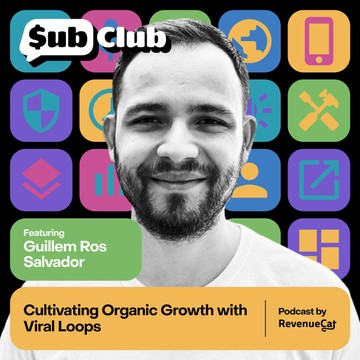
22 snips
Jun 28, 2023 • 41min
Cultivating Organic Growth with Viral Loops — Guillem Ros Salvador, Hevy
On this episode: We talk with Guillem about how Hevy got traction early on, growing without paid marketing, and why you might not want to raise your price, even if customers would pay more.Top Takeaways🏛️ When shaping your MVP, establish a clear framework to guide your product development. Particularly for small teams or those bootstrapping, maintaining a lean approach is crucial. Identify your product's three core pillars, which will inform your decisions on which features to retain or eliminate.🪞 Do you believe if you build it, they will come? That might be the case occasionally, but launching a new app can prove challenging. A practical initial strategy, covering roughly 80% of your bases, is to mirror successful competitors: target the same keywords, implement similar tactics. This isn't a long-term strategy, but it will position you ahead of those who do nothing and attract an initial user base.🤝 When developing a social app, be cautious about how pricing changes might undermine user trust. If your app is predicated on social sharing, frequent or radical pricing experiments could incite negative discussions among your users. However, if you consistently offer good value, your users are likely to share this positive sentiment.🪴 Cultivating organic growth early on primes your app for sustainable expansion, with paid acquisition serving as an effective boost. Growing primarily through organic strategies – such as social viral loops or App Store Optimization (ASO) – ensures your app's growth is not overly dependent on costly advertising, which can influence your pricing model.🤹One of the perks of building a small team? It facilitates a concentrated focus on what's best for the product. While the allure of the indie route – keeping things super lean with minimal costs – can be tempting, it can hamper your growth scale. A team not only brings in diverse skills but also provides a buffer between product ideation and implementation.About Guillem Ros Salvador👨💻 CEO and co-founder of Hevy, a leading gym workout tracker and planner app for iOS and Android.💪 Guillem and his co-founder took the basic idea of Strava to create a community-focused weightlifting app. Hevy has been downloaded more than two million times so far.💡 “We try to take in as much feedback as possible. We ask for feedback all the time inside the app, and we're always in contact with users by email. That seems to be a great way to just gather feedback.”👋 LinkedIn | TwitterLinks & Resources‣ Check out Hevy‣ Work with Hevy‣ How Hevy was built‣ Read about Guillem’s journey‣ Connect with Guillem on LinkedIn‣ Connect with Guillem on TwitterEpisode Highlights[2:06] Building dreams: After five years of app building, Guillem learned from failures to move from mobile gaming into fitness (as both a hobby and a profession).[5:28] Pain point analysis: Moving from triathlons to the gym, Guillem realized the missing ingredient was community.[7:45] Rapid 1.0 ship: Ruthless cutting and asking the key question of what the real MVP is was the key to shipping quickly. Tracking, analytics and social were the foundations of their MVP.[13:25] Burgeoning communities: Sometimes, single-digit downloads are the spark you need to get going — and that can give you insight, understanding and word-of-mouth growth. Then, one day, the communities pop up.[19:00] Ramen profitable: Within a year and a half, Guillem was working on Hevy full-time. Germany’s unemployment benefits went some way in helping him get there.[23:09] Two million downloads: Compounding word of mouth and a slew of New Year's resolutions vaulted Hevy to the next level — sustained with a good product.[26:22] Pricing thoughts: Guillem and his partner quickly realized that because Hevy was higher-quality and more social than competitors, they could keep the price low and still turn a profit.[29:53] Near-zero acquisition costs: Even the behemoths didn’t pay to acquire users in the early days.[34:44] Hiring management: Hevy’s team of 10 keeps operations lean while broadening their vision more than Guillem and his partner could alone.
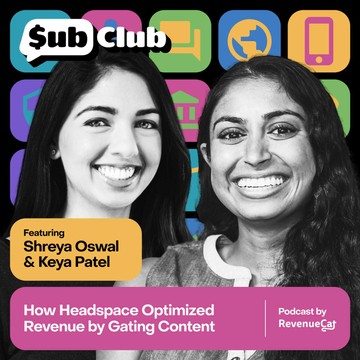
35 snips
Jun 14, 2023 • 44min
How Headspace Optimized Revenue by Gating Content — Shreya Oswal and Keya Patel, Headspace
Shreya Oswal and Keya Patel from Headspace discuss the evolution of their freemium model, the impact of gating content on engagement levels, the effectiveness of pricing tests, onboarding experiments, integrating life cycle decisions into the product team, and revamping the referral program.
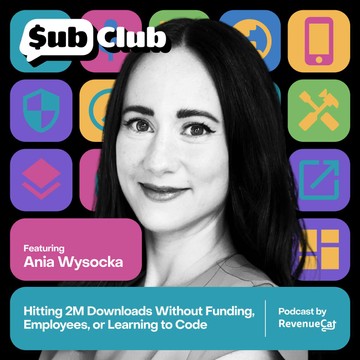
15 snips
May 31, 2023 • 37min
Hitting 2M Downloads Without Funding, Employees, or Learning to Code — Ania Wysocka, Rootd
On this episode: the one small tweak that increased revenue 5X, growing an app organically, and how hiring an ASO consultant actually tanked downloads.Top Takeaways💰 Not all problems can be solved with money, so see if you can fix your own problems internally — like team communication — before paying for external help.💡 Highly relevant ASO keywords with lower search volumes are a better bet for engaging audiences earlier and seeing snowballing success.🌅 Putting a paywall early enough in the onboarding process might just supercharge revenue and growth.📰 When you don’t have an advertising budget, start with local journalists and tie press releases to key events in the year.🌳 Organic referral mechanisms — ****like screen sharing success and milestones — can be very effective while enhancing user experience.About Ania Wysocka👨💻 Founder of Rootd.💡 “I‘m so obsessed with the user experience, that it's important to work with others who also are obsessed with user experience.”👋 LinkedIn | TwitterLinks & Resources‣ Check out Rootd‣ B2B with Rootd‣ Rootd on Instagram‣ Connect with Ania on LinkedIn‣ Connect with Ania on TwitterEpisode Highlights[1:31] Strong roots: Ania created Rootd not as a result of surveys or user research, but in response to her own personal need.[8:31] Contract buzzkill: Working with contractors can be a challenge — alignment of values is the key.[10:13] Fundraiser tales: If you haven’t hit a wall in development, it might not yet be time to seek investment. Fixing internal processes first can pay dividends later.[12:53] Early ASnOwball: Sticking with keywords that might initially yield lower volumes can ultimately drive traffic that helps your app snowball. Ania found contracting ASO counterproductive.[17:49] Dialing in the funnel: A paywall at the beginning of the onboarding process increased Rootd’s revenue by five times — with no negative feedback.[20:55] Get their attention: Local journalists love to promote local business stories, and tying stories to specific world events can work wonders when there’s no advertising budget.[25:03] Apple Editor’s Choice: Sometimes it pays to be as persistent as possible in submissions for getting featured.[28:20] Paid marketing experimentation: Don’t pay for marketing until you’re ready to experiment.


